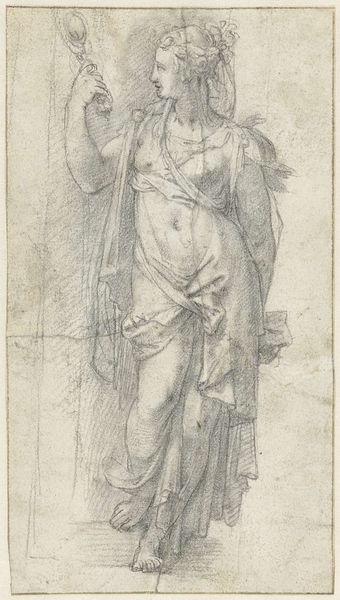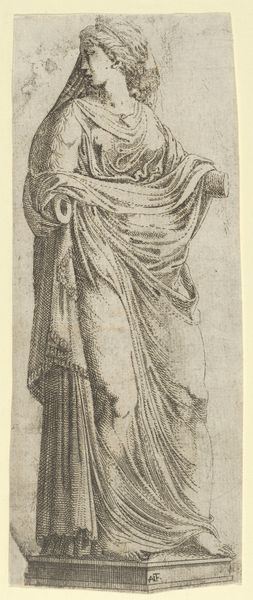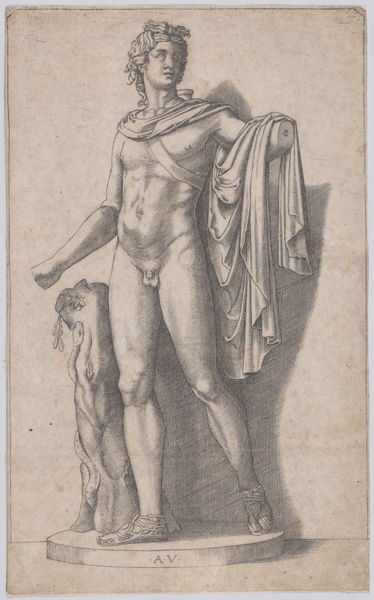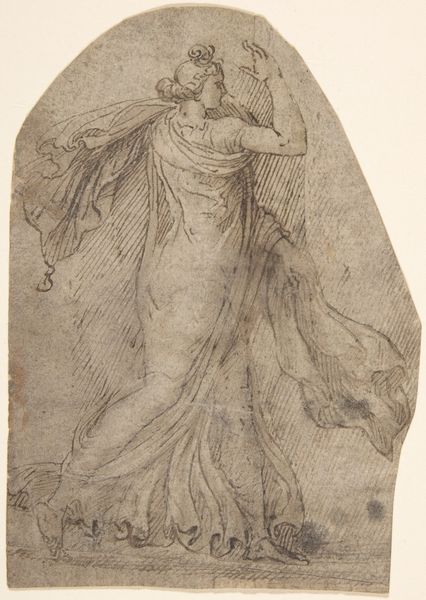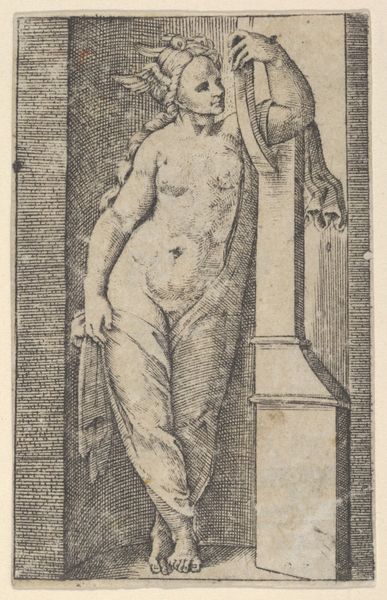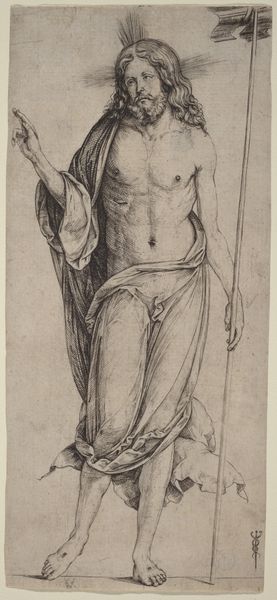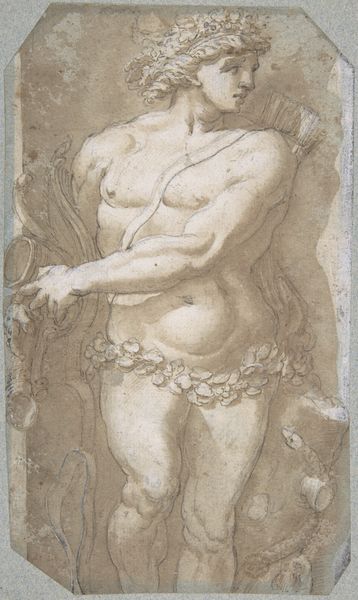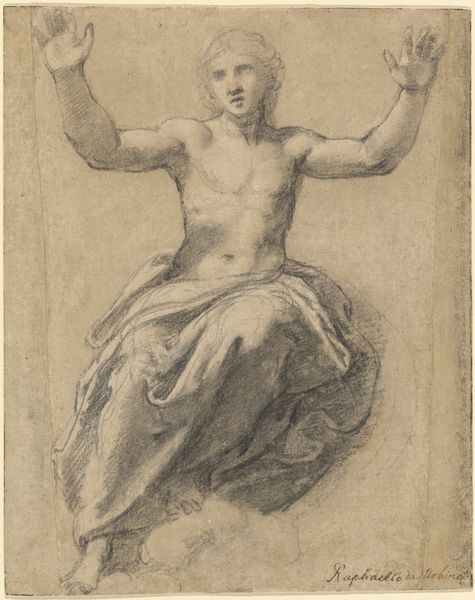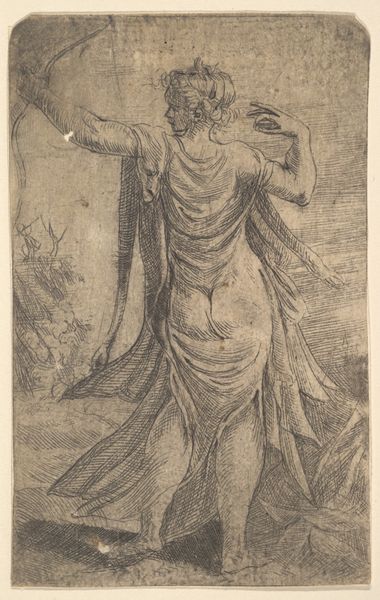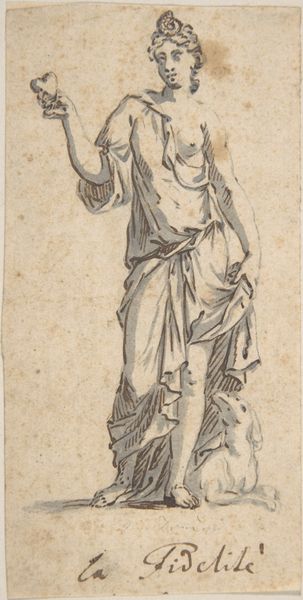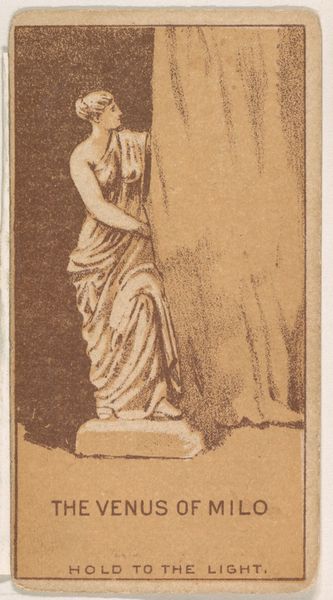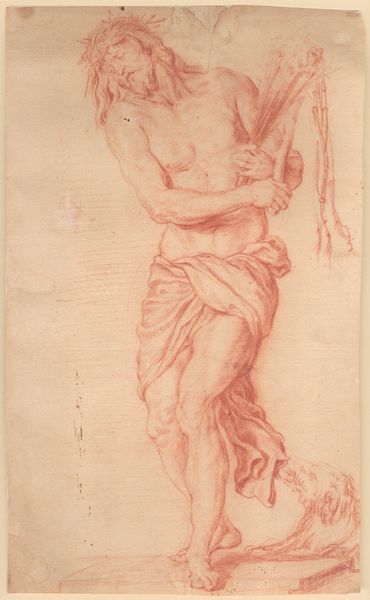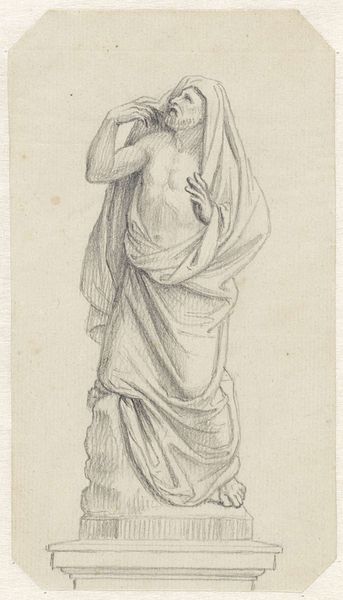
drawing, print, bronze, paper, sculpture, pencil, engraving
#
portrait
#
drawing
# print
#
bronze
#
charcoal drawing
#
figuration
#
paper
#
11_renaissance
#
ancient-mediterranean
#
sculpture
#
pencil
#
history-painting
#
charcoal
#
italian-renaissance
#
nude
#
engraving
Dimensions: 8 1/2 x 4 1/4 in. (21.6 x 10.8 cm); maximum; cut to octagonal shape
Copyright: Public Domain
Curator: This delicate study is attributed to Marcantonio Raimondi and dates roughly from 1475 to 1534. It depicts an antique statue, and it’s currently held at the Metropolitan Museum of Art. Editor: The figure looks incomplete. Without its head or arms, it evokes a sense of fragmented memory or maybe loss of the antique grandeur itself. There's also a rawness in the material – it seems like charcoal or pencil on paper. Curator: Absolutely. Raimondi, who is known for his engravings, might have made it as a study piece. Note the precision of the rendering, the use of line to define form. The classical figure represents an ideal of beauty, echoing the artistic philosophies that the Italian Renaissance sought to revive from the Ancient world. Editor: Yes, but I am also intrigued by the tactile sense the piece offers. The texture created with simple tools. It seems the process of creating a copy, or a rendition, has value too; and the material speaks as much as the ideal it attempts to reproduce. Think about the socio-economic implications of easily available printed images; imagine its importance as a commodity to the global dissemination of styles. Curator: That's a valid point, because we know images—even fragmented ones—can carry immense weight. It triggers cultural memory and reminds us of how Renaissance artists and audiences perceived antiquity, their values, and their gods. They sought to revive a past grandeur and impart those beliefs through visual imagery. Editor: Right, and from the material perspective, consider how paper as a substrate impacts the accessibility and circulation of these ideals. This brings these classical forms into artisans' studios and parlors, influencing a wider swathe of society than monumental sculpture ever could. This re-imagining through an engraving makes it more readily available and widely consumable. Curator: I appreciate how you point out its democratizing aspect, the way a reproduction of antiquity could then influence material culture far beyond the elite circles. It suggests the timeless allure of the antique and its adaptability. Editor: Indeed, something crafted in ink on paper still speaks to our present. It has been a rewarding look at this ancient representation.
Comments
No comments
Be the first to comment and join the conversation on the ultimate creative platform.

